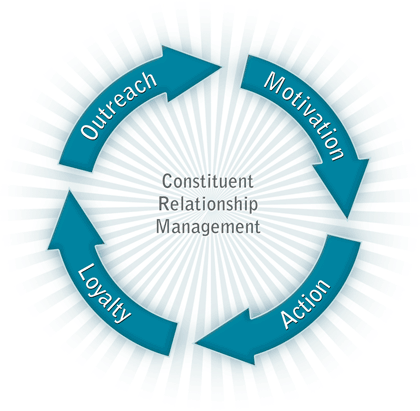A consumer-focused approach tells who your customers are & what they want. E-CRM is the right tool as it captures, stores, and retrieves relevant information of consumers.
All customers are not created equal, and neither are the user applications for electronic Customer Relationship Management (e-CRM). The forms of this hosted online marketing tool are as diverse as the businesses they serve, offering customization to target consumers in ways that best suit individual needs. E-CRM captures, stores, and retrieves a wealth of information about consumers, and its wide-angle approach is purely intentional.
That’s because every piece of data is potentially useful in a marketing sense. What seems irrelevant to one department may prove indispensable to another and vice versa,  so e-CRM records everyone’s input. In this way, “CRM almost makes everyone in your organisation a sales person, since they are selling your business in one way or another” (International Data Corporation, cited in SmallBizCRM.com, 2005).
so e-CRM records everyone’s input. In this way, “CRM almost makes everyone in your organisation a sales person, since they are selling your business in one way or another” (International Data Corporation, cited in SmallBizCRM.com, 2005).
Making Cents of It All
Marketing literature frequently claims that it makes more sense to retain current customers than to acquire new ones. According to Lawrence Friedman and Tim Furey in The Channel Advantage (1999), "the cost of acquiring new customers is typically three to six times that of retaining existing ones."
E-CRM can track those consumers who have already purchased from you and nurture their loyalty by using data cues to create long-term relationships with them in personalized and meaningful ways. This may take the form of e-mails, chat rooms, voice-overs, discount coupons, or any number of mediums, and it may involve the integration of information you already possess with incoming sources (“Customer Relationship Management, E-CRM” by John Shenton in GlobalMillenniaMarketing.com, April 30, 2002).
This pursuit of existing customers is not a hard-and-fast rule for every situation. In The Loyalty Effect: The Hidden Force behind Growth, Profits, and Lasting Value (2001), Frederick F. Reichheld and Thomas Teal appreciate that in most cases, it is wiser to reinforce in-place relationships instead of trying to build new ones, but they warn that in some instances this actually causes a loss in profits. By mining data, e-CRM can identify those consumers with the greatest potential for repeat business and prevent you from wasting resources on those who are likely to reject even your most attractive overtures.
This kind of marketing heads-up can give you much more bang for your buck, and it all hinges on getting to know consumers better. That’s probably why 63 percent of companies surveyed by the Aberdeen Group in 2005 categorized themselves as “extremely” customer-driven, as opposed to only 48 percent in 2003 (SmallBizCRM.com, 2005).
At its core, this consumer-focused approach tells you who your customers are and what they want. If you haven’t yet figured that out, e-CRM can do it for you.
